The Complete Cook Shark Sunglasses Review: Are They Really Worth It?

Let’s get this out of the way: sunglasses aren’t just for blocking sunlight. They’ve become an everyday essential — a mix of fashion, function, and (for many of us) protection from eyestrain or just plain awkward eye contact. Now, when it comes to performance and style at a decent price point, Cook Shark sunglasses have quietly carved out a space. And they’ve done it without trying too hard.
I spent the last few weeks getting to know the Cook Shark lineup. And what started as “let’s test a couple pairs” quickly turned into “okay, these are seriously underrated.” So if you’re thinking about grabbing a pair (or three), here’s everything you need to know — the good, the not-so-good, and the genuinely surprising.
What Is Cook Shark and Why Should You Care?
Cook Shark isn’t trying to be Ray-Ban. Or Oakley. They’re not leaning on celebrity hype or dripping logos on the sides of their frames. Instead, they focus on a specific formula: lightweight metals, polarized lenses, sports functionality, and a surprisingly refined design language.
They’re marketed toward active men — guys who drive, fish, cycle, or just want glasses that do more than look good on a shelf. But honestly? A lot of these styles are unisex. If you like clean lines, subtle branding, and functionality, it doesn’t matter who you are — these might work.
Materials: What You’re Actually Getting
Let’s talk about materials. This is where I expected corners to be cut. Instead, I found aluminum-magnesium frames on nearly every pair. That means you’re getting something feather-light, resistant to corrosion, and less likely to warp or snap if dropped.
The lenses are polarized resin, which might not sound sexy, but they do the job — cutting glare, reducing reflections on car windshields and water, and even improving contrast in daylight.
Some models also include photochromic lenses, which shift tint based on ambient light. It’s not magic, but it does mean you can go from shade to sun without swapping glasses.
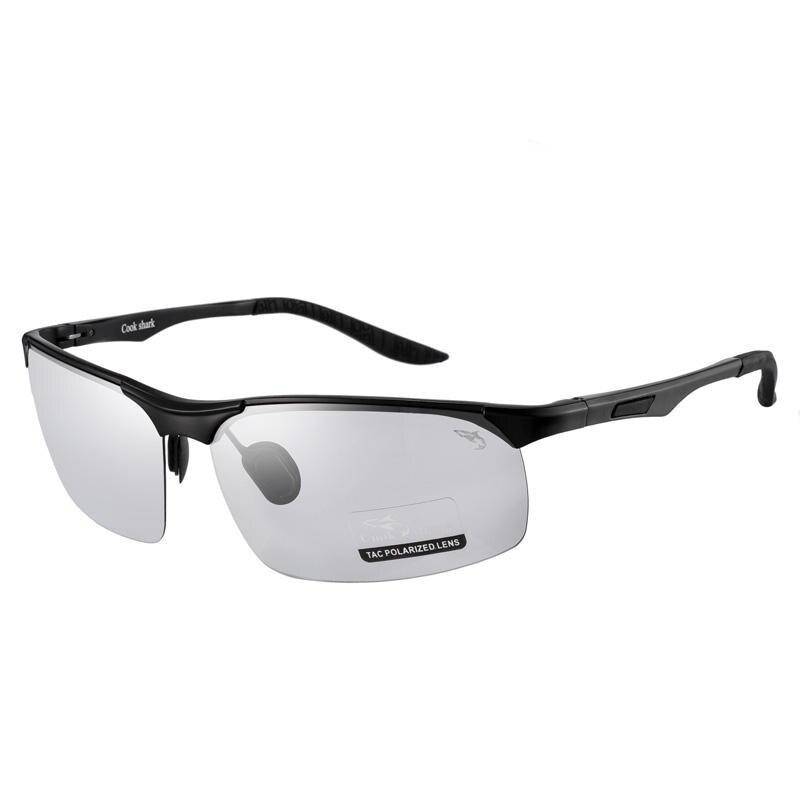
The Cook Shark Lineup: Reviewed Model-by-Model
Here’s where things get interesting. The Cook Shark lineup isn’t huge, but it’s surprisingly diverse. I’ve broken down the core models I tested so you can see what fits your lifestyle and taste.
1. Cook Shark 8034 – The Flagship All-Rounder

This one’s their best-seller, and for good reason.
- Frame: Aluminum-magnesium
- Lenses: Polarized + Photochromic
- Style: Pilot-inspired, medium-large coverage
You put these on and instantly feel that balance: not too heavy, but not flimsy either. The photochromic lenses actually work, adjusting to ambient sunlight fairly quickly. Driving in and out of tunnels? These help. They’re ideal for road trips, and I found them more comfortable than some higher-end glasses I’ve used.
Best for: Driving, casual wear, weekend warriors
Downside: Might be too big for small faces
2. Cook Shark Classic Polarized Series – Minimal but Reliable
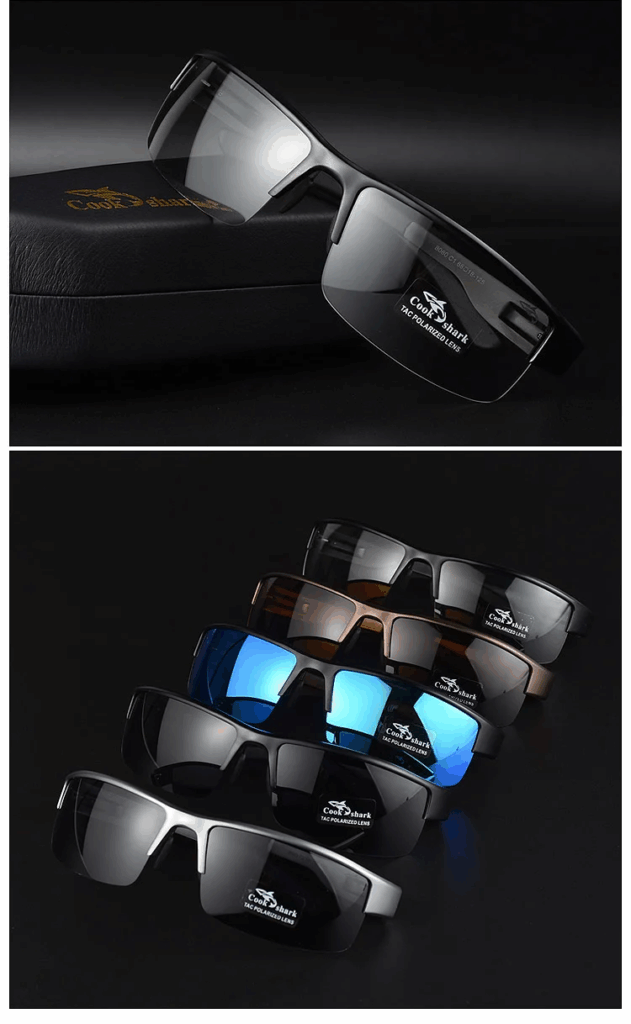
These are the simpler, slightly more affordable frames. No photochromic magic, just good old polarized UV400 protection.
- Frame: Aluminum-magnesium or TR90 plastic depending on variant
- Lenses: Polarized only
- Style: Clean and casual
If you want a no-nonsense pair of sunglasses you can toss in your car or gym bag, these are it. I wore them hiking and didn’t think about them once — and that’s a compliment.
Best for: People who lose sunglasses often, or just want a solid backup
Downside: No auto-dimming, less of a premium feel
3. Cook Shark Sport Wraparounds – Built for Movement
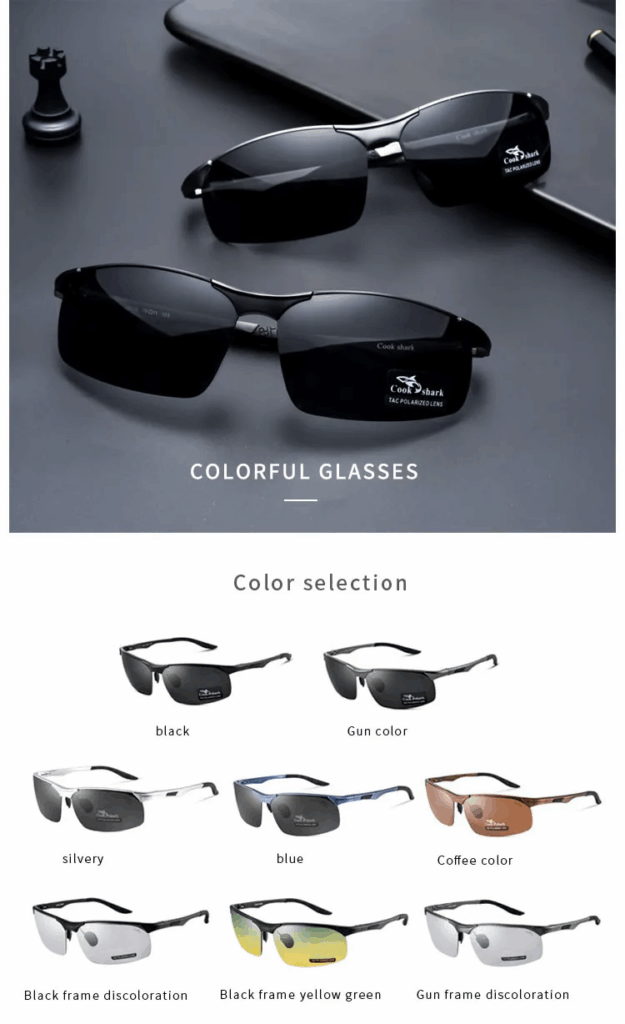
These are clearly designed for athletes — think cyclists, runners, and anyone constantly in motion.
- Frame: TR90 with rubberized grips
- Lenses: Polarized, some photochromic versions available
- Style: Sporty, snug fit
They wrap tight, don’t bounce on your face, and actually stay put. They’re incredibly light, to the point where I forgot I had them on during a trail run.
Best for: Sports, intense outdoor activity
Downside: Look less versatile for daily wear
4. Cook Shark Retro Collection – Style First, Function Close Behind

These are your Instagram-worthy pairs. Sharp lines, gradient lenses, thin arms. A nice nod to designer aesthetics.
- Frame: Lightweight metal or metal-acetate combo
- Lenses: Polarized
- Style: Fashion-forward
I wore these out to lunch, paired them with a clean tee and jeans, and got compliments from people who had no idea they were from a lesser-known brand.
Best for: Looking good on city streets or at brunch
Downside: Not as sporty or rugged as other models
What Makes These Stand Out?
So many sunglass brands play in the $50–$120 space. What makes Cook Shark different?
- Polarization as Standard – Every pair blocks glare.
- Lightweight Frames – Especially the aluminum-magnesium ones. They feel premium.
- UV400 Protection – Your eyes are covered, even if you’re out for hours.
- Price-to-Value Ratio – You’re getting performance normally reserved for $150+ models.
Color & Lens Variety: Way More Than Expected
Most of the lineup comes with multiple lens colors — black, navy blue, gradient gray, photochromic, silver, dark green, and coffee. This isn’t just about aesthetics. Different lens tints offer specific advantages:
- Gray/Black: Neutral color perception, good for everyday use
- Green: High contrast, good for fishing and forest hikes
- Brown/Amber: Great for sharpness in lower light
- Photochromic: Adapts to different lighting automatically
You don’t need five pairs. But if you’re the type who tailors their accessories to the activity? You’ll appreciate the choice.
Fit and Comfort: Surprisingly Consistent
Fit is personal, sure — but across the line, the consistency is impressive. Most models use adjustable nose pads, flexible arms, and rubber tips to improve grip. I wore a few pairs for several hours at a time and didn’t get that temple pressure or ear fatigue you sometimes feel with cheap metal glasses.
If you have a smaller face, though, double-check the lens width. A couple of models (like the 8034) run large. On the flip side, if your face is wide or angular, these will feel made for you.
Use Cases: Where They Really Shine
- Daily Commutes: You’ll notice less squinting and less eye fatigue on bright days.
- Long Drives: Polarized lenses cut windshield glare beautifully.
- Fishing/Boating: Water glare is where they perform best.
- Photography: Some lenses don’t distort color — good news if you’re shooting outdoors.
- Outdoor Sports: Lightweight frames + tight grip = no bounce or slide.
Who Should Buy Cook Shark Sunglasses?
- You value performance and price
- You want more than one pair without overspending
- You live a mostly active lifestyle
- You appreciate subtle branding
- You’re tired of overpriced “designer” plastic frames
Who Might Skip Them?
- You’re a fashion purist obsessed with name-brand logos
- You want prescription lenses (Cook Shark doesn’t offer that yet)
- You have an extra small or narrow face — try before you buy
How Does Cook Shark Compare to Oakley and Kingseven?
Let’s face it — sunglasses are one of those things where brand loyalty runs deep. So how does Cook Shark stack up against more established names like Oakley or up-and-comers like Kingseven?
Here’s a quick side-by-side breakdown:
| Brand/Type | Cook Shark | Oakley | Kingseven |
|---|---|---|---|
| Price Range | $30–$80 | $100–$300 | $25–$60 |
| Market Position | Mid-range functional | High-performance/sports elite | Budget-performance blend |
| Design Language | Sporty, masculine, modern | Aggressive, bold, tactical | Elegant, sleek, minimal |
| Core Material | Aluminum-magnesium, resin | Composite, impact-resistant | Wood, aluminum, polycarbonate |
| Sales Model | Marketplace / DTC | Retail, DTC | Marketplace / DTC |
Let’s unpack that.
Cook Shark vs Oakley: Function vs Prestige
If Oakley is the high-performance Ferrari of sunglasses, Cook Shark is more like a well-tuned Subaru. It’s not here to turn heads at the track, but it’ll handle almost anything you throw at it — for a fraction of the price.
Oakley definitely pulls ahead in terms of sports-specific tech — their Prizm lens line is hard to beat in certain environments (like trail running or snowboarding). But if you’re not grinding out Ironman races or climbing glaciers, you may not need that extra edge.
Cook Shark wins on price-to-performance. Oakley wins on tech (and ego).
Cook Shark vs Kingseven: Two Underdogs, One Clear Winner
Kingseven offers something totally different. Their styles lean more toward minimalist lifestyle looks — wood arms, round lenses, “cool guy on a Vespa” vibes. They’re fun, affordable, and fashionable.
But they often lack durability. The wood arms can splinter, and cheaper polycarbonate lenses can feel a bit off when it comes to clarity. They also tend to ship via dropship models, which can lead to inconsistent packaging or support.
Cook Shark, on the other hand, feels more refined in both construction and experience. Better metals, better frames, and more reliable lens performance — especially in bright outdoor conditions.
Cook Shark wins for function and durability. Kingseven wins if you want a $30 style statement.
The Verdict in One Sentence
If Oakley is for elite athletes and Kingseven is for casual minimalists, Cook Shark is for the everyday guy who just wants solid gear that works.
Real Customer Feedback (and Mine)
Here’s what a few customers had to say — and I agree with most of it:
“Lenses seem better than most at this price point. Nice and light as well.”
— G.
“I bought a pair of these glasses and received so many compliments on how they look that I bought a second pair in a different color.”
— K.
What stood out to me personally was that “second pair” effect. Once you try one, it’s tempting to grab another color or model for a different activity. That rarely happens with $200 shades.
Final Verdict: Underrated? Absolutely.
Cook Shark sunglasses aren’t trying to reinvent the wheel — they’re just making it spin smoother, for less money. You get polarized lenses, photochromic options, lightweight materials, and clean, timeless designs. No gimmicks, just practicality with a touch of polish.
Are they perfect? No. A few models could use smaller sizing options. And if you’re only shopping for labels, these won’t cut it.
But for the rest of us? These are workhorses. Day-after-day, car-to-trail, gym-to-beach kind of sunglasses. The kind you wear until you forget what life was like squinting into the sun.
And at this price? You can finally afford to forget them on the dashboard without having a breakdown.
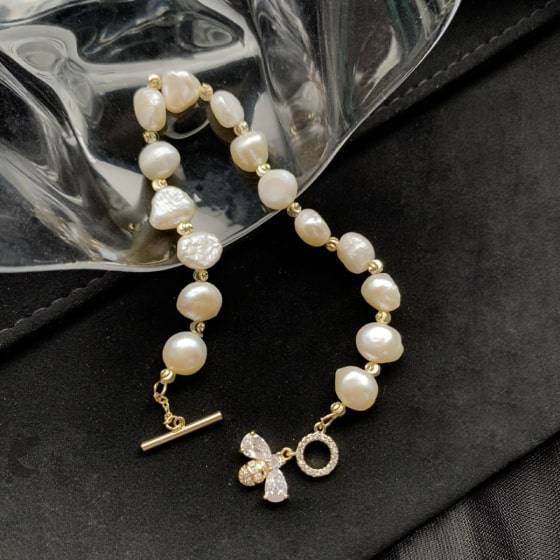

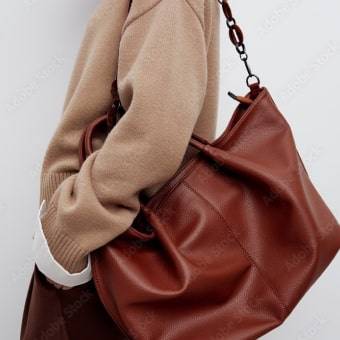
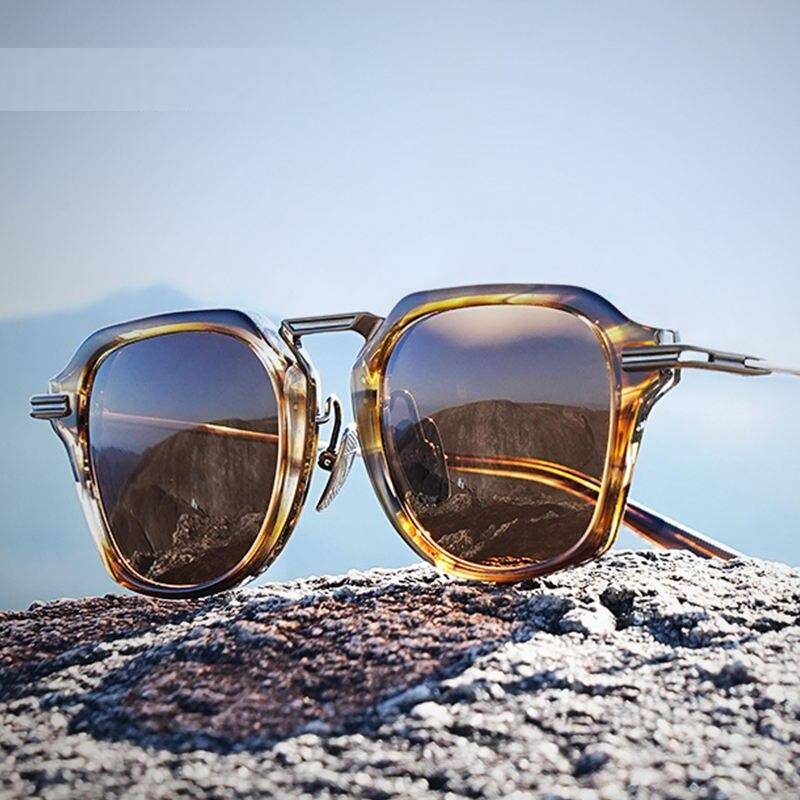
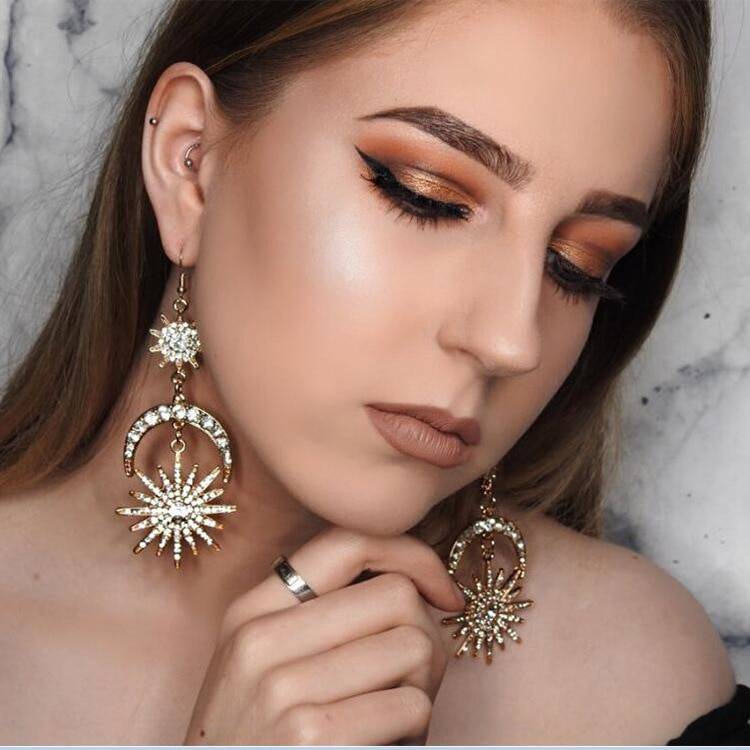










Leave a comment
You must be logged in to post a comment.